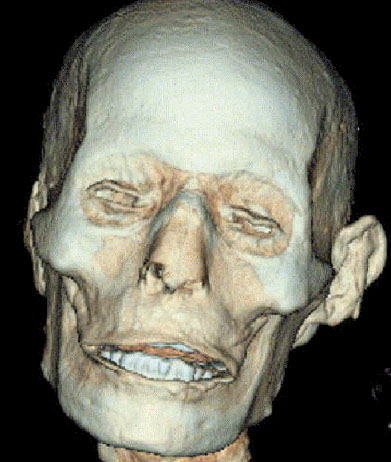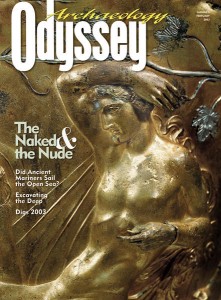U.S. Museums to Return Pharaoh’s Mummy and Roman Sculpture
After determining that objects in their archaeological collections had entered this country under suspicious circumstances, two U.S. university museums separately announced plans last summer to repatriate the artifacts to their countries of origin.
The Michael C. Carlos Museum at Atlanta’s Emory University will return to Egypt a mummy that scientists believe is the remains of Pharaoh Ramesses I (1295–1294 B.C.). According to Peter Lacovara, the Carlos’s curator of ancient Egyptian art, the mummy will resume “its rightful place, as a good will gesture from the citizens of Atlanta.”

The mummy’s crossed arms—a burial pose reserved exclusively for royal mummies—and its physical resemblance to the remains of Seti I, Ramesses’s son, prompted researchers to examine the mummy using non-invasive computerized tomography (CT) scans (a computer-generated image of Ramesses’s head is shown above). Tests confirmed that the mummy’s brain had been removed and his skull filled with molten resin—a mummification technique used for Egyptian royalty during Ramesses I’s reign.
The Emory University museum had purchased the then-unidentified remains, along with an extensive collection of ancient Egyptian art and artifacts, from Canada’s Niagara Falls Museum in 1999. The mummy had originally been acquired from a broker in Luxor, Egypt, in the 1860s, when a cache of mummies—discovered in what was later identified as a royal cemetery—was partially sold off.
Already a library member? Log in here.
Institution user? Log in with your IP address.

